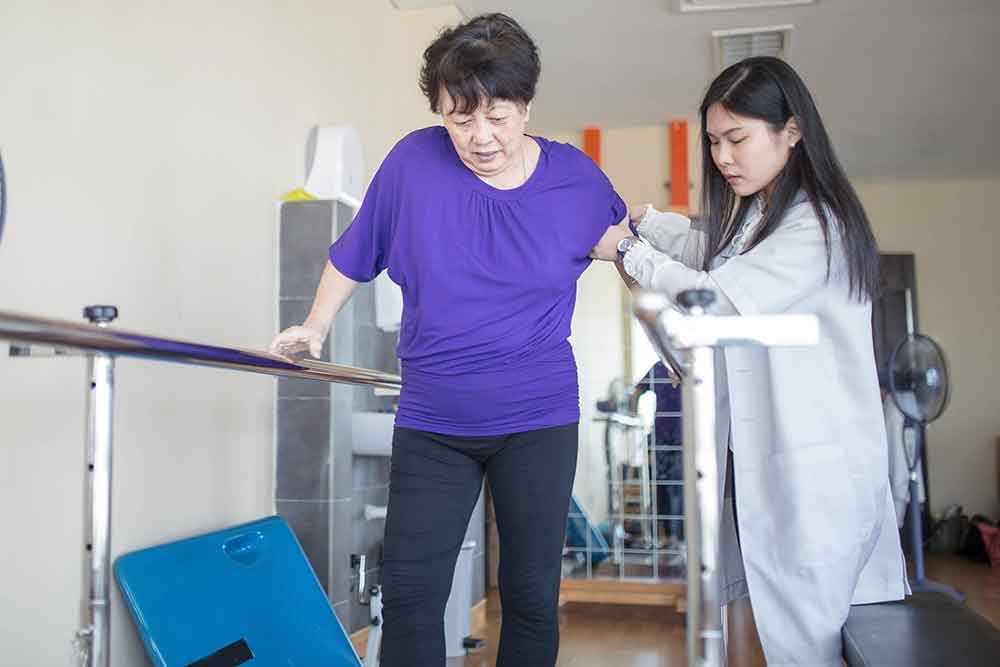Anyone, at any age, can be in danger of a stroke.
A stroke, while common, is one of the most fatal diseases out there, being the number five top cause of death everywhere in the United States. In fact, in the United States alone, a person dies due to a stroke every 3.5 minutes.
So, what exactly is it?
A stroke occurs when a blood vessel in your brain ruptures and bleeds, essentially cutting off oxygen from your brain. There are a few types of stroke. One can be due to a clot, and one to a rupture.
Causes of Stroke
A major reason stroke is so common is that the causes can easily be overlooked in everyday life. If you are a little careless, you might already be at risk. Among these contributors are:
- An unbalanced diet where over consumption of salts, saturated fats, and cholesterol is present.
- Inactivity can cause your vessels to be clogged because your body can not break down the fatty material. A lack of exercise means multiple heart complications, and an unhealthy heart means the blood can not be transferred properly.
- Alcohol use usually leads to higher blood pressure, raising triglyceride levels that can cause atherosclerosis or plaque buildup in the arteries.
- Family history is out of your control, but a history of high blood pressure can increase your chances of a stroke.
- Age is also a factor here, but this does not mean that younger people are exempt from strokes because they may occur at any age.
Once you experience a stroke, the doctors will probably recommend swift medical treatment with an intervention of thrombolytic and TPA (Tissue Plasminogen Activator) to help break up blood clots. However, one cannot help but think about other ways that stroke can be dealt with, especially when one cannot afford the price of medical aid.
Alternative Treatments For Stroke
Here are some alternatives for stroke treatment:
- Black or green tea
Starting with a change in diet, it is recommended by top researchers that you should try drinking black or green tea.
In this case, the more tea, the better because a study in Japan showed that drinking at least seven cups of tea a day will help decrease your chances of repeated stroke by up to 62%. Moreover, tea helps prevent cases of diabetes by helping fight against a spike in blood sugar.
- Fruits and vegetables
Fruits and vegetables are usually the food components in a healthy diet, especially those suggested by health professionals. Aside from being low in fat and calories, which prevents weight gain, they have the necessary vitamins to keep you feeling healthy and energized.
Potassium-rich fruits and vegetables is a key here. Prunes, potatoes, bananas, and melon help maintain healthy blood pressure.
It is recommended that you have an intake of about 4-5 servings of fruit per day.
- Low-fat dairy
We usually can not avoid consuming dairy; from cheese to milk to ice cream, we tend to not care about the effects of dairy since it is a delight to consume. They are not totally bad since manufacturers can fill them with vitamin D and Calcium. Still, some dairy products can contain absurd amounts of cholesterol and saturated fats, which is a big no-no for stroke prevention.
The goal is to get low-fat options for dairy products, which will still contain all the necessary vitamins but have a cut on the portion that damages your heart’s health.
- Being active
Aside from changing diet, participating in body treatment and physical activity is a crucial component of stroke prevention. You are encouraged to look at the following activities and pick at least a few of them to add to your weekly agenda.
- Massage therapy
Strokes can leave patients with memory loss, paralysis, and muscle weakness. A gentle Massage can help in big ways with all of these side effects, helping the body’s metabolism and helping patients relax.
Massage therapy also helps with blood circulation, which is vital to regaining a patient’s motor functions and quality of life.
- Hydrotherapy
This treatment utilizes water to help improve the patient’s mobility and strength. Pools of water are an excellent option for stroke patients to recover their strength because it is safe and effective, as well as help improve cardiovascular functions in the body.
Moreover, submersion in water allows for easing pains and aches throughout the body.
- Tai Chi
Developed in ancient China, Tai Chi involves slow movements partnered with deep breathing to maintain body composure and keep the mind at ease.
Seeing as how stroke patients usually experience motor complications after an initial attack, tests were conducted to show the effects of Tai Chi on their motor functions. Studies found that after three months of practice, they had a more comprehensive range of motion in their shoulders, improved arm movement and strength, and sitting balance.
Tai Chi is a merciful, slow, and easy to practice form of movement that will ensure results for even the direst of cases, and you can start learning in the comfort of your home.
Takeaway
The best way to deal with a stroke is to be aware that you may be in danger.
Early intervention and being able to identify symptoms will help you be decisive when you are to turn your life around. Strokes will primarily happen to those who cannot maintain their physical health, so if you want to prevent complications in the future, make sure that you keep your diet and exercise in check. If you already have a history of stroke, you can also join stroke new treatment to find treatments for the condition.

